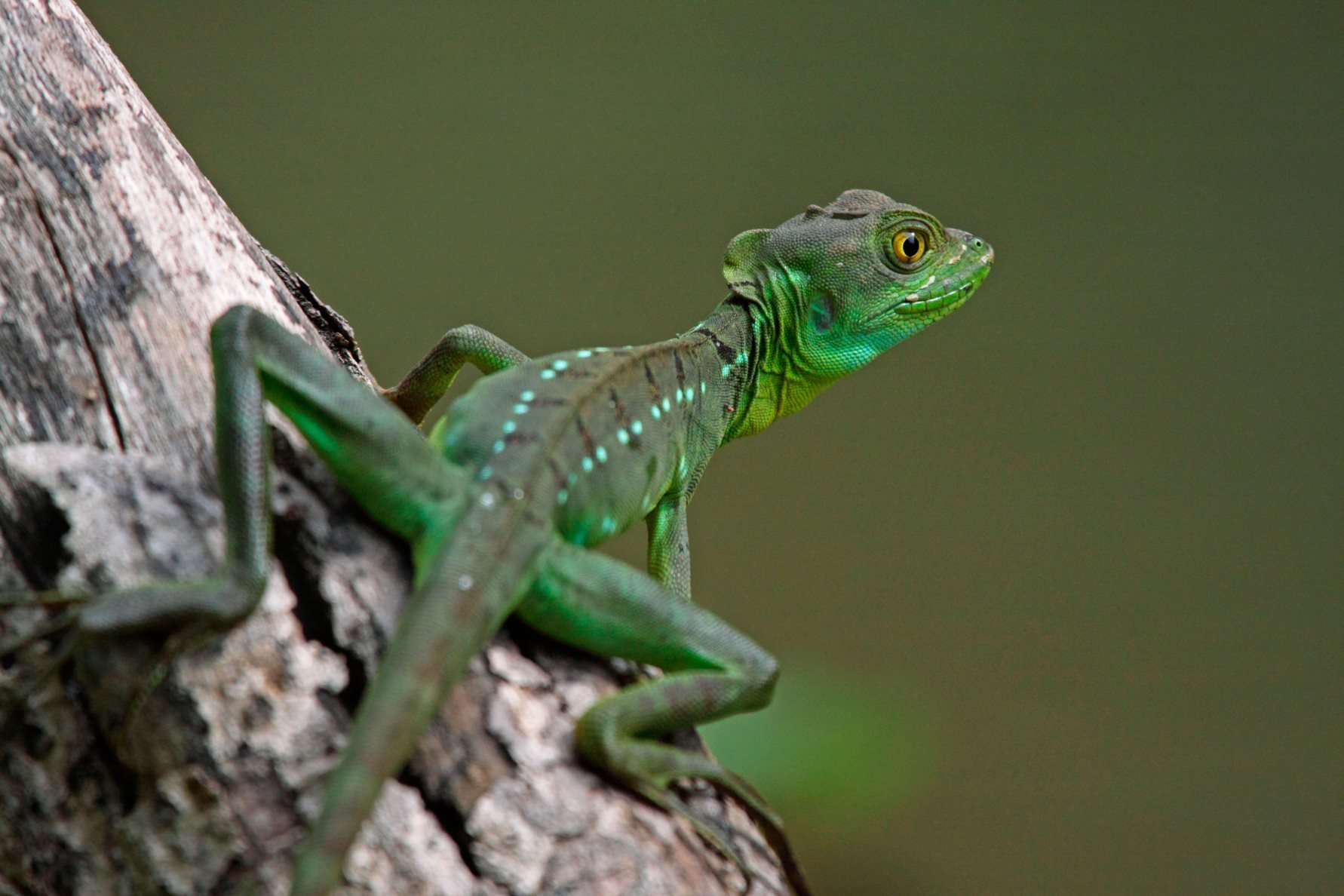Coronavirus has forced many to look again at how humanity relates to animals and nature. In Kunming this October, a meeting of importance to all life on the planet will take place: the Convention on Biological Diversity’s (CDB) 15th Conference of the Parties (COP15). It is no exaggeration to describe this as of historical significance.
The most important task at COP15 is to decide upon a post-2020 global biodiversity framework, setting biodiversity targets for the next decade and a 2050 vision of “living in harmony with nature”, as well as producing an ambitious action plan to achieve these goals.
On 6 January 2020, the CBD published a “zero draft” to serve as the basis for negotiations. This initial version of a 2020 framework was discussed last week in Rome. But there is still a clear gap between the text and the vision for biodiversity protection.
Aichi disappointments
Since 1992, when the CBD was opened for signature, humanity has failed to prevent the loss of biodiversity – and in many countries, the situation has worsened.
At COP6, in 2002, a Strategic Plan for the Convention on Biological Diversity was adopted, with a bold aim: “to achieve by 2010 a significant reduction of the current rate of biodiversity loss”. But assessments found that first decadal goal was unachievable and species extinctions actually accelerated.
In 2010, COP10 was held in Nagoya, Japan, producing the 2011-2020 Strategic Plan. This included 20 headline targets, known as the Aichi Biodiversity Targets, and called for “effective and urgent action” to avoid the loss of the natural biodiversity on which humanity relies. But progress was difficult. In 2018, France’s Institute for Sustainable Development and International Relations determined that most of the 20 Aichi targets were unlikely to be achieved by 2020. In April 2019, IPBES (the Intergovernmental Science-Policy Platform on Biodiversity and Ecosystem Services) said in its Global Assessment Report that one million of the planet’s eight million species, and 40% of amphibious species, were facing extinction, with the scale of nature loss worsening.
International society has no choice but to re-examine its approach and clear structural failings in order to set the CBD on the correct path in Kunming and avoid repeating earlier errors.
Learning Aichi’s lessons
The failure of the Aichi targets can teach us several lessons.
First, there was a lack of scientific backing and strategic focus. Biodiversity loss is a crisis occurring in every corner of the globe, yet there is not enough scientific modelling. Compare this with climate change, where quantitative models are used to set a 1.5C warming target, which leads to concrete actions being assigned at the national, regional and sectoral levels. The overall target provides practical guidance. The inherent complexity of nature and biodiversity makes it hard to identify a single measure that tells us how much land or how many species we need to protect to achieve “harmony with nature”. This makes systematic global action harder.
Second, there was a gap between the design of the Aichi targets and their implementation. Too much time was spent designing and negotiating the targets instead of internalising them in national strategies and actions. Similarly, too little time was spent designing mechanisms, such as international and national policymaking, implementation mechanisms, resource mobilisation and evaluation and incentives – and these were not made adequately binding.
Third, the rights and participation of indigenous peoples and local communities were not covered. At least one quarter of land globally has traditionally been owned or managed by indigenous people, and there is increasing evidence that community-managed ecosystems have better biodiversity outcomes. Although the Aichi targets recognised the importance of local populations and traditional knowledge, and tried to promote poverty relief and sustainable development through fair distribution of genetic resources, there was insufficient recognition of the rights and contributions of indigenous people and local communities, as well as a lack of guarantees of these from governments and society. Protection of biodiversity is not just a matter for governments and elites.
Finally, there was a failure to take advantage of non-state actors such as civil society groups and the public. International organisations, national non-governmental organisations, businesses and the public were not able to participate widely in the creation and implementation of the framework. Such involvement is crucial to leveraging private resources and market mechanisms, mainstreaming protection of biodiversity, and rebuilding the relationship between humanity and nature.
Zero draft not enough
The Civil Society Alliance for Biodiversity Conservation, a group of Chinese bodies working on biodiversity and environmental governance, has carefully examined the current “zero draft” and found the following five issues. These leave us concerned that humanity will not be able to protect life on earth over the next 10 to 30 years.
First, it is unambitious and will not produce the transformative change needed to protect and restore nature that was called for in the IPBES report. The 2030 target should be raised so it states the goal: “to stop and reverse the loss of biodiversity by 2030, setting biodiversity on the road to recovery.”
Producing action plans for key industries could tackle the root causes of biodiversity loss whilst balancing ambition with practical action. For example, in China the SEE (Society of Entrepreneurs and Ecology) Foundation has linked environmental protection aims with business practices to create green supply chain standards. It is also encouraging businesses to practise green procurement and make environmental improvements. We also suggest the background section of the draft describes the extra risks posed by climate change, to highlight the urgency of realising transformative change.
Second, “action targets” have not ensured the effective protection of biodiversity. We note the framework divides its targets into “long-term goals” and “action targets” – an effective method of encouraging concrete discussions. But action targets (such as “protect X% of land area”) only serve as starting points for policymaking, and do not ensure the actual protection of biodiversity. So, targets which can be used to evaluate the outcome of policies are needed to monitor actual progress. We also suggest a focus on actions to be taken for 2030, rather than setting goals for both 2030 and 2050, as currently seen in the zero draft. Including 2050 goals will consume scarce time and resources and hold back the talks.
Third, the targets should give full play to the roles and contributions of non-state actors. The widespread changes needed for the 2050 vision demand unprecedented cooperation and participation. The zero draft emphasises the rights and actions of indigenous people, local communities, civil society and the private sector in multiple sections. But it lacks content on how to incorporate the goals and actions of non-state actors, and in particular the contributions of civil society, indigenous peoples, local communities and the private sector towards the 2030 biodiversity targets. For example, Chinese environmental groups such as the Global Environmental Institute and the Paradise Foundation have protected around 8,000 km2 of land, protecting many key species and habitats. But those protected areas are not currently recognised in legislation and so are not counted as part of China’s contribution to the protection of biodiversity.
Fourth, better definition of the responsibilities and duties for protection of ocean biodiversity. The nature of the ocean means its protection requires regional or global cooperation. We note the current draft mentions communication and cooperation with other international organisations and multilateral environmental agreements. We hope to see the legal definition of oceans made clear, alongside responsibilities inside and outside of areas of national jurisdiction. Member states should also be encouraged to cooperate on biodiversity protection and sustainable development of the high seas, to assess the impact of fishing, shipping and other activities on the ocean environment, and to take measures to minimise that impact.
Fifth, strengthen implementation mechanisms supporting the targets. We note that talks on implementation mechanisms, resource allocation, responsibilities and transparency are ongoing, with no concrete language in the zero draft. We call for implementation mechanisms which match ambitious targets, to ensure the effectiveness of the post-2020 framework. For example, China has put forward the “ecological civilisation” concept, backed up by policy reforms and action, such as setting ecological redlines and carrying out environmental implementation inspection. This provides a model for mechanisms protecting biodiversity. The ecological civilisation is already a COP15 theme, and the framework should include examples of implementation mechanisms to be considered.
The world is already undergoing its sixth mass extinction, sparked by humanity itself – and only humanity can stop it. The coronavirus sweeping the world, the plagues of locusts in sub-Saharan Africa and beyond – these events show the biodiversity crisis our vulnerable planet is facing, and the urgent need for us to “live in harmony with nature.” The Kunming conference will be humanity’s last chance to save biodiversity, but the window of opportunity is closing. Using the coming seven months to produce an ambitious yet practical plan is the life-or-death challenge we now face.
Originally published in Thepaper.cn’s Half the World column. Abridged and republished by China Dialogue with permission.
The Civil Society Alliance for Biodiversity Conservation (CSABC) was founded in 2019, on invitation of the Ministry for Ecology and Environment, by the Paradise Foundation and seven other organisations, to promote inclusion of contributions from non-state actors in the biodiversity targets to be set at CBD COP15 in Kunming, and to mobilise social forces to establish protected areas. Since November 2017 the Paradise Foundation has been working with 26 Chinese and overseas environmental groups to establish protected areas in China, and to manage these for the state.





![Labourers build a detention centre in Goalpara, Assam, on February 10, 2020. [image by: David Talukdar / Shutterstock.com]](https://dialogue.earth/content/uploads/2020/03/Assam-Goalpara-300x202.jpg)


![One of the female Mahakali villagers. This spring in a village of Nepal’s Darchula district was repaired by the women of India and Nepal working together; women from India cross the Mahakali every day and come to the spring for water; Chandra Samantha sits by [image by: Minket Lepcha]](https://dialogue.earth/content/uploads/2020/02/Minket-story-3-Chandra-Samantha-300x200.jpg)